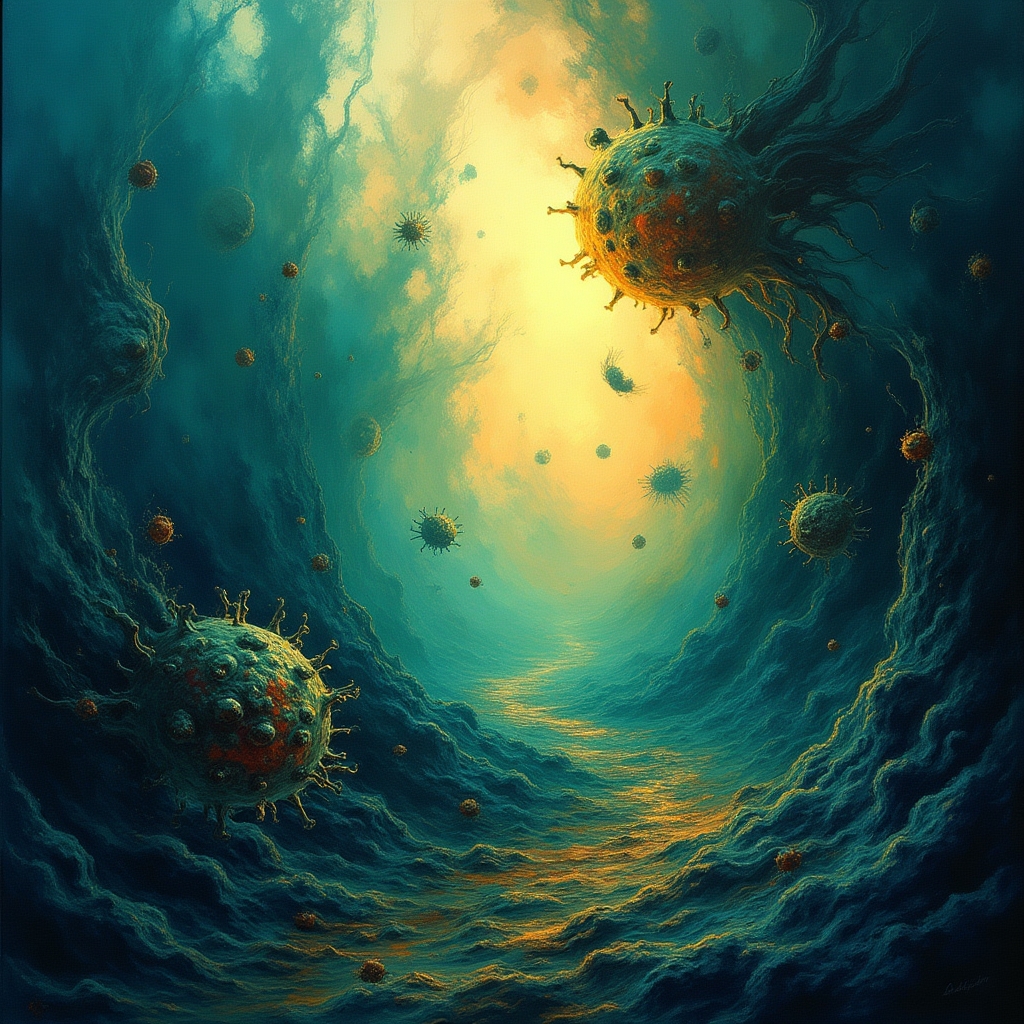Deep in the intricate workings of the human body, a battle is constantly raging against a formidable foe—pancreatic cancer. Among the many challenges this type of cancer presents, its ability to outmaneuver treatments and immune defenses has baffled scientists for years. Yet, a glimmer of hope emerges from the depths of scientific research, shining a light on a potential strategy that promises to fortify our fight against this relentless disease.
iN SUMMARY
- 🧪 Starving tumors may enhance the effectiveness of cancer treatments.
- 🔬 Pancreatic cancer cells use a process called macropinocytosis to feed.
- 🧬 Blocking this process softens and changes the tumor's environment.
- ✨ New strategies may make tumors more accessible to therapies.
Imagine a team of determined researchers peering through their microscopes, unraveling the secrets held within cells, driven by a singular mission to outsmart cancer. According to recent studies, one of the cancer cells' most cunning tricks lies in their use of a scavenging process called macropinocytosis. This process allows them to extract nutrients from nearby tissues, fueling their growth and fortifying their defenses against drug treatments and immune cells (Science Daily).
A New Perspective on Cancer Treatment
Think of it this way: When you're dealing with an adversary that adapts and resists at every turn, wouldn't you want to take away its main source of strength? This is exactly what researchers have been attempting. Through innovative experiments conducted on mice, they have succeeded in blocking macropinocytosis. This experimental breakthrough could potentially transform how we approach cancer treatment, offering newfound hope to those affected by pancreatic and other stubborn cancers.
Understanding the Enemy: The Role of Macropinocytosis
Macropinocytosis, at its core, is a form of cellular eating. Such a process allows cancer cells to consume large quantities of nutrients in fluid form, a vital survival strategy, especially when these cells find themselves in the nutrient-poor landscapes within the human body. By engorging themselves in this manner, they not only nourish their growth but also build a kind of protective barrier against external threats. This remarkable adaptability makes pancreatic cancer cells particularly challenging adversaries.
The Breakthrough: Changing Tumor Environments
By blocking this process, researchers discovered that tumors became softer and less dense, creating an environment which allows therapies and immune cells easier access to attack the cancer cells where they thrive. Just like a previously impenetrable fortress suddenly becoming accessible, this new vulnerability could turn the tide in cancer treatment.
Steps to a Softer Tumor
- Identification of the presence of macropinocytosis in tumor cells.
- Application of inhibitors to block the macropinocytosis process.
- Observation of changes in tumor density and texture.
- Analysis of therapy efficiency in the modified tumor environments.
The Global Impact and Local Efforts
This research is just one of many efforts across the globe to tackle pancreatic cancer. For those living in bustling cultural centers like Calgary or Sydney, staying informed and connected with local health institutions and news outlets can be crucial. These portals provide invaluable information and support for those affected by cancer, offering the latest updates on research and treatment advances.
Looking to the Future
As the journey continues, one cannot help but feel a bubbling optimism for the future of cancer treatment. By cutting off cancer cells' nutrient supply, we create new opportunities to conquer what once appeared unconquerable. As research progresses from animals to humans, the potential to save lives becomes a promising reality.
So, what would you do if you held the power to influence the next breakthrough in cancer treatment? How might this discovery change the lives around you? Join the iNthacity community to share your thoughts, become a resident of our "Shining City on the Web," and be part of a global conversation. Liking, sharing, and participating in these debates could inspire new insights and breakthroughs, offering hope to countless families touched by cancer.
And remember, every innovation, no matter how small, contributes to the larger tapestry of science and healing. After all, even the tiniest step forward can ripple out to create waves of change. So, keep your spirits high and your eyes on the horizon—because the fight against cancer is a collective cause, and together, we can starve the enemy into submission.
Disclaimer: This article may contain affiliate links. If you click on these links and make a purchase, we may receive a commission at no additional cost to you. Our recommendations and reviews are always independent and objective, aiming to provide you with the best information and resources.
Get Exclusive Stories, Photos, Art & Offers - Subscribe Today!
























Post Comment
You must be logged in to post a comment.